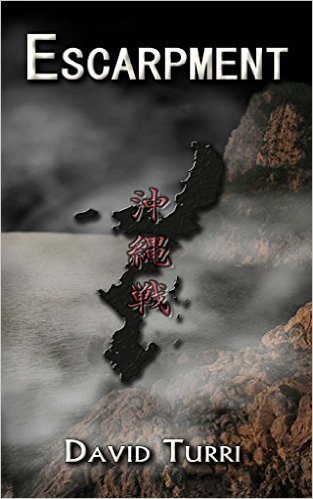Iwo
“Escarpment”
http://www.amazon.com/Escarpment-David-Turri-ebook/dp/B016LX8U60/ref=asap_bc?ie=UTF8 Japan http://www.amazon.co.jp/Escarpment-English-David-Turri-ebook/dp/B016LX8U60/ref=sr_1_1?ie=UTF8&qid=1449998013&sr=8-1&keywords=Escarpment
tells of the ghosts that still haunt the battlefield of Okinawa and the souls of the Okinawan people. But before Okinawa, there was Iwo Jima…
[Quoted from “The Making of the Atomic Bomb” by Richard Rhodes, page 595.]
The Japanese commanded Suribachi, the high ground; they had zeroed in on every point of consequence on the flat island and now stood back to fire. On the beaches, says [William] Manchester, men were more often killed by artillery than by bullets.
 “The invaders were taking heavy mortar and artillery fire. Steel sleeted down on them like the lash of a desert storm. By dust, 2,420 of the 30,000 men on the beach head were dead or wounded. The perimeter was only four thousand yards long, seven hundred yards deep in the north and a thousand yards in the south…Essential cargo – ammo, rations, water – was piled up in sprawling chaos. And gore, flesh and bones were lying all about. The deaths on Iwo were extraordinarily violent…Often the only way to distinguish between Japanese and marine dead was by the legs. Marines wore canvas leggings and the Nips khaki puttees…You tripped over strings of viscera fifteen feet long, over bodies which had been cut in half at the waist, Legs and arms, and heads baring only necks, lay fifty feet from the closest torsos. As night fell the beach reeked with the stench of burning flesh.”
“The invaders were taking heavy mortar and artillery fire. Steel sleeted down on them like the lash of a desert storm. By dust, 2,420 of the 30,000 men on the beach head were dead or wounded. The perimeter was only four thousand yards long, seven hundred yards deep in the north and a thousand yards in the south…Essential cargo – ammo, rations, water – was piled up in sprawling chaos. And gore, flesh and bones were lying all about. The deaths on Iwo were extraordinarily violent…Often the only way to distinguish between Japanese and marine dead was by the legs. Marines wore canvas leggings and the Nips khaki puttees…You tripped over strings of viscera fifteen feet long, over bodies which had been cut in half at the waist, Legs and arms, and heads baring only necks, lay fifty feet from the closest torsos. As night fell the beach reeked with the stench of burning flesh.”





